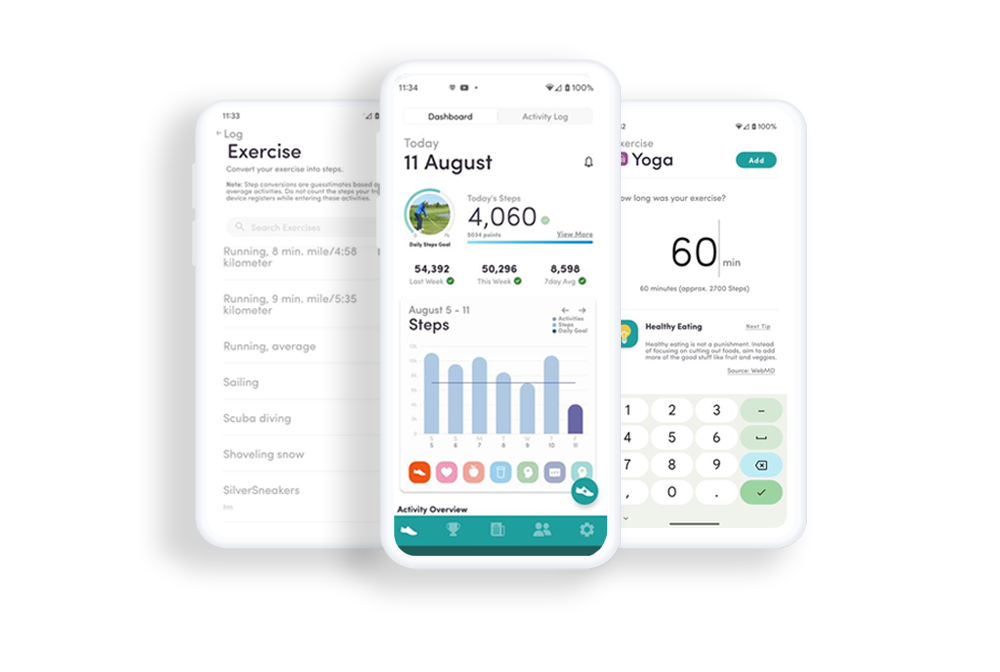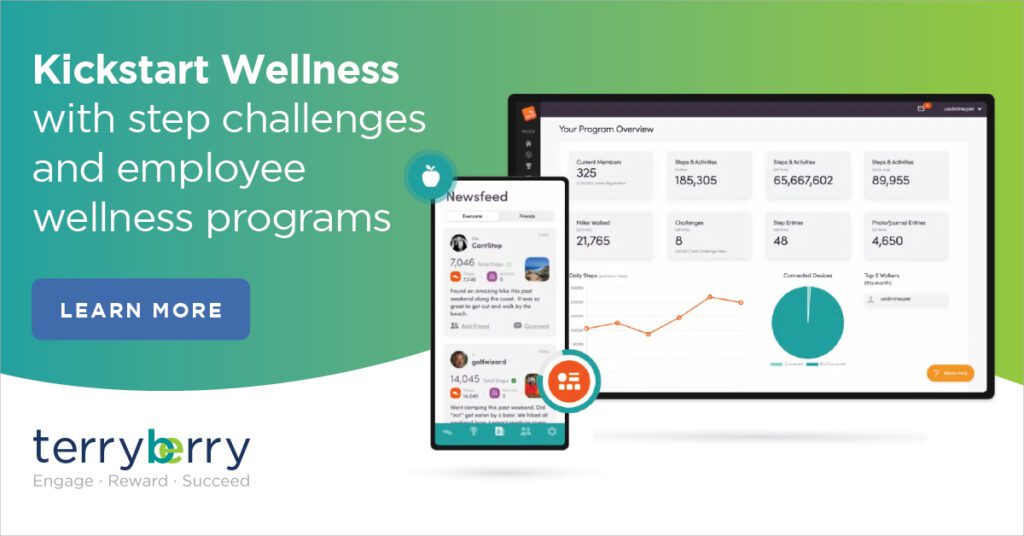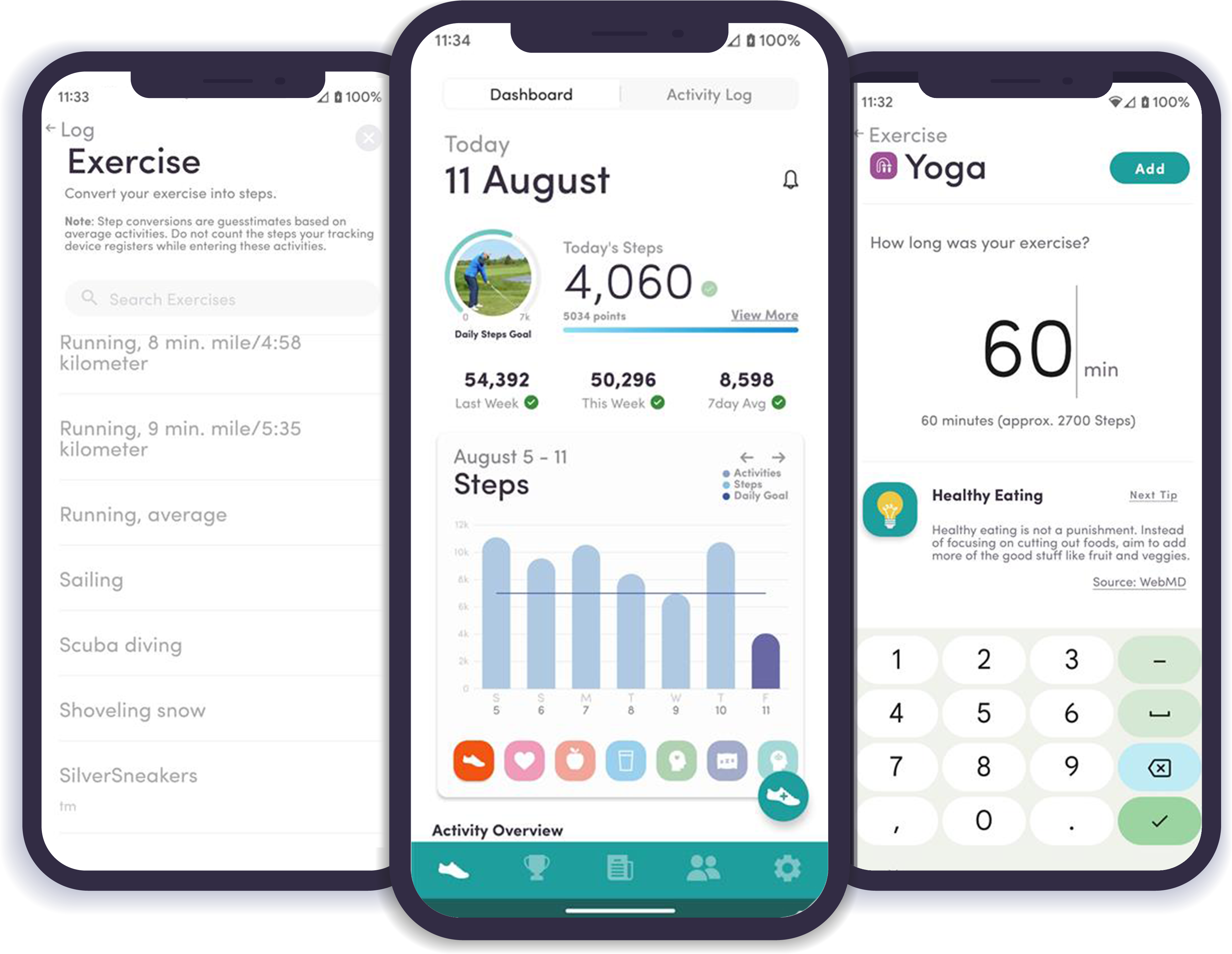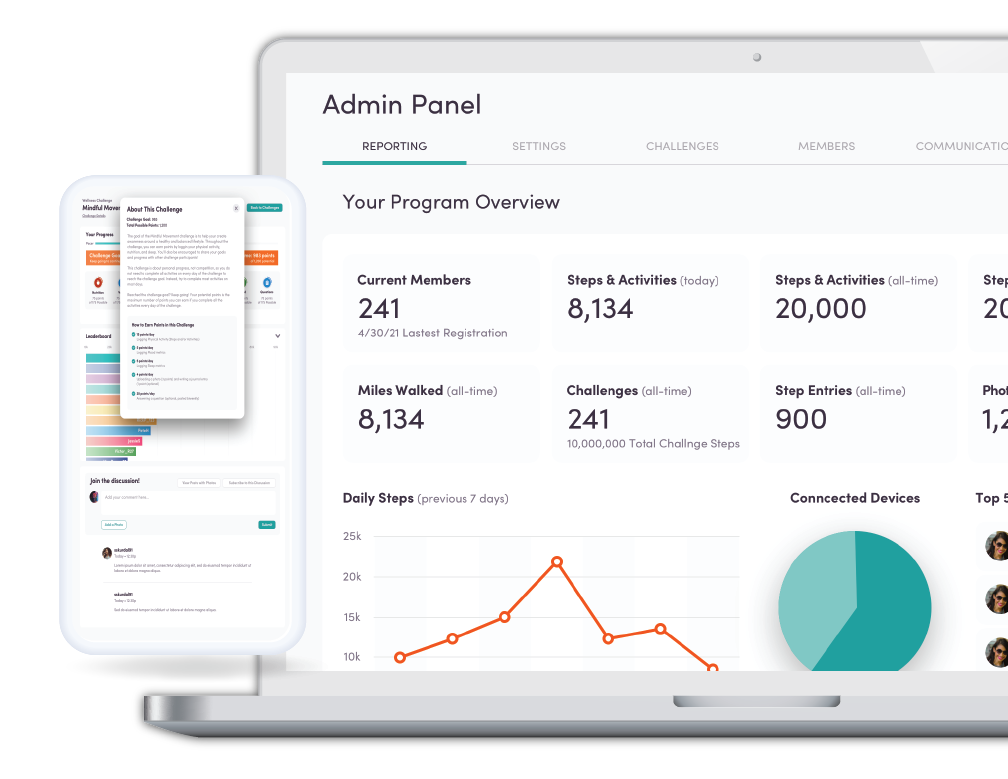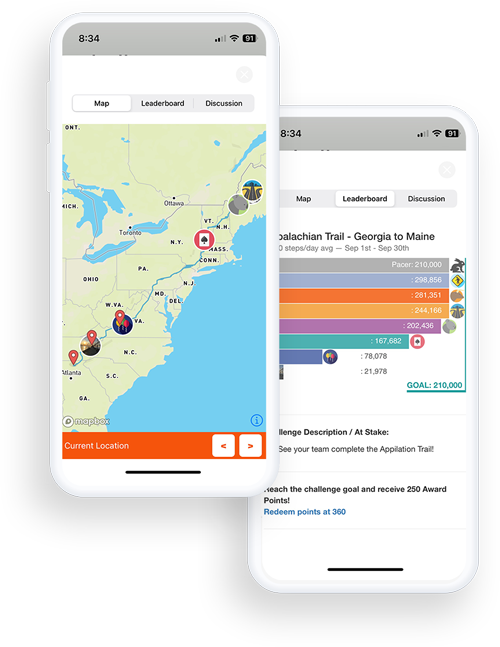June 28, 2024


Wellness activities in the workplace are becoming more common than ever before. As values have shifted, employees are now turning to their employers to prioritize mental and physical well-being.
It’s no real surprise either, considering the current landscape. Considering the pandemic and the Great Resignation, coupled with inflation and the cost of living crisis and it’s easy to see why employees are looking for a bit of extra care.
In fact, the WHO reported a 25% worldwide increase in anxiety and depression in March of 2022. Not to mention the rise of burnout and disengagement.
So, if you’re looking for ways to attract, retain, and engage your team today, having an employee wellness program is a must.
What are Wellness Activities?
A wellness activity is anything someone does to benefit their well-being. Well-being itself may be subjective to each person, but in general, people tend to want to be happier and healthier. So any healthy habits and activities that support these initiatives can be considered a wellness activity.
Keep in mind, that these activities will need to encourage employees to go beyond focusing on just diet and exercise. This means office wellness programs will need to be holistic to be effective.
Types of Wellness Activities
Physical Wellness
- Exercise: Activities such as walking, running, swimming, cycling, yoga, and strength training.
- Nutrition: Eating a balanced diet, staying hydrated, and practicing healthy eating habits and mindful eating.
- Sleep: Establishing a consistent sleep routine, ensuring quality sleep, and creating a restful environment.
- Hygiene: Maintaining personal cleanliness and practicing good grooming habits.
- Preventive Healthcare: Regular check-ups, vaccinations, and health screenings.
Mental Health Wellness
- Meditation: Practicing mindfulness, deep breathing exercises, and guided meditation.
- Stress Management: Techniques such as time management, relaxation exercises, and setting boundaries.
- Continuous Learning: Engaging in activities that stimulate the mind, such as reading, puzzles, and educational courses.
- Therapy: Counseling, cognitive-behavioral therapy, and other forms of professional mental health support.
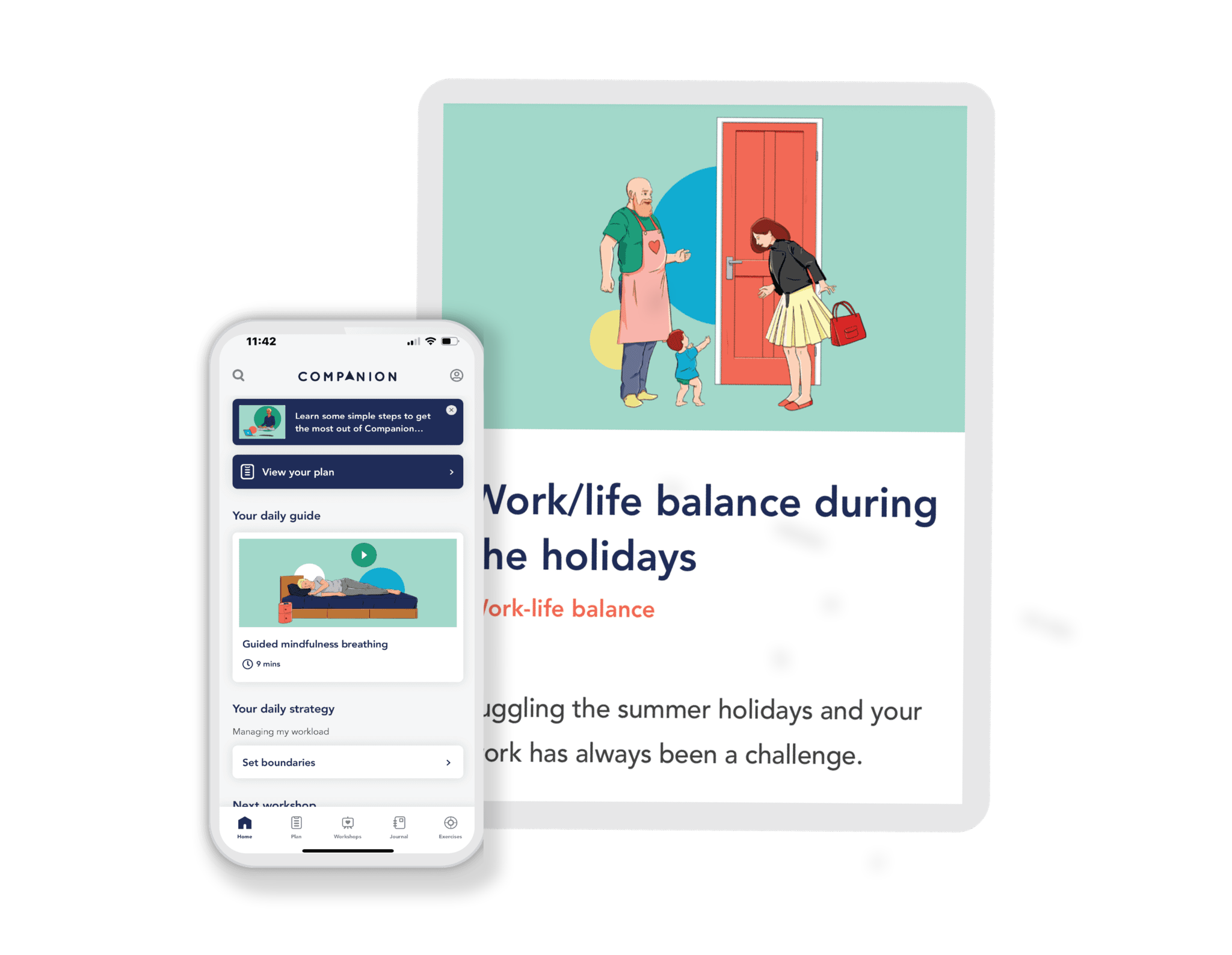

Emotional Wellness
- Self-Reflection: Journaling, introspection, and mindfulness practices.
- Positive Affirmations: Using positive self-talk and affirmations to build self-esteem.
- Gratitude Practices: Keeping a gratitude journal and expressing thanks regularly.
- Emotional Regulation: Techniques to manage and express emotions healthily.
Social Wellness
- Socializing: Spending time with family and friends, and participating in social activities.
- Community Involvement: Volunteering, joining clubs or groups, and participating in community events.
- Building Relationships: Developing and maintaining supportive and healthy relationships.
- Communication Skills: Practicing effective communication, active listening, and empathy.
Spiritual Wellness
- Spiritual Practices: Activities like prayer, meditation, and attending religious services.
- Connecting with Nature: Spending time outdoors, gardening, and nature walks.
- Purpose and Meaning: Engaging in activities that provide a sense of purpose and fulfillment.
- Mindfulness: Practicing mindfulness in daily activities and staying present.
Occupational Wellness
- Career Development: Pursuing professional growth, learning new skills, and seeking career advancement.
- Work-Life Balance: Managing time effectively to balance work and personal life.
- Job Satisfaction: Finding meaning and satisfaction in work, and maintaining a positive work environment.
- Healthy Work Environment: Promoting a safe, supportive, and productive workplace. Providing resources and support for remote employees, such as paying for work amenities like WiFi and offering incentives and rewards for participation in wellness activities.
RELATED: Occupational Wellness Examples & Why it’s Critical for Boosting Employee Engagement


Environmental Wellness
- Sustainable Practices: Recycling, reducing waste, and using eco-friendly products.
- Creating a Healthy Living Space: Keeping living and working spaces clean, organized, and free of hazards.
- Connecting with Nature: Activities that promote appreciation and stewardship of the environment.
Financial Wellness
- Budgeting: Creating and maintaining a budget to manage expenses.
- Saving and Investing: Building savings, investing wisely, and planning for the future.
- Debt Management: Strategies to reduce and manage debt.
- Financial Education: Learning about financial planning, investments, and money management.
50 Corporate Wellness Activity Ideas
Consider breaking up your activities into wellness buckets. Since there tends to be five generally appealing areas of wellness, breaking wellness activities up into groups will help ensure you’re touching on all areas equally.
Keep in mind though, that some wellness activities will overlap, like bringing lunch to work could improve both physical and financial wellness.

10 Physical Wellness Activity Ideas
- Get 8 hours of sleep/go to bed early
- Read for 20 minutes before bed
- Do a 10-minute morning stretch
- Cut out coffee after 3pm
- Pack a homemade lunch for a week
- Aim for 5 servings of fruits or vegetables a day
- Try a new healthy recipe
- Go meatless for one day
- Increase your movement (i.e., increase steps by 1,000 or add 5 minutes to a workout routine each week)
- Eat less added sugar a day
10 Mental Wellness Activity Ideas
- Start learning a language
- Organize/clean an area of your house
- Go outside for 20 minutes a day
- Meditate for 10 minutes
- Attend a yoga class
- Do something for yourself for at least 10 minutes everyday
- Try a breathing exercise, like box breathing, to reduce stress
- Start a journal/gratitude journal
- Offer free counseling through the company’s EAP
- Reduce screen time/set app timers on your phone

10 Financial Wellness Activity Ideas
- Limit eating at restaurants to once per week
- Create a monthly home budget
- Offer a free session with a finance coach
- Bring in financial speakers to present at the company
- Offer/encourage meetings with the benefits coordinator to ensure employees are getting the most out of their benefits
- Set a financial goal and outline concrete steps to achieve it
- Set up an autosave program through either a bank or an app
- Establish a “rainy day” fund and start putting money aside
- Set up banking alerts for checking account usage/withdrawals
- Take a finance class online
10 Career Wellness Activity Ideas
- Thank a coworker for something they’ve done
- Take an online class to learn a skill that will help employees develop their skill sets
- Shadow a coworker in another department
- Say hello to someone you haven’t met yet or don’t typically work with
- Start meetings with a two word check in
- Offer small plants for people to keep at their desk or workstation
- Once an hour, take a 5-minute stretch, walk, or breathing break
- Start a mentorship program
- Take pulse surveys to ensure you're meeting the needs of your employees
- Try utilizing a time management app or computer program

10 Social Wellness Activity Ideas
-
- Talk on the phone or video chat with a friend or family member
- Spend time with a friend in person
- Get involved in a group or club
- Volunteer at a school, church, or hospital
- Have a family game night (and invite other families sometimes too!)
- Take a class - like yoga, cooking, or pottery
- Start an office group - like a trivia group or a book club
- Learn about and practice active listening
- Organize office lunches either on-site or virtually
- Start a social recognition program
- Organize virtual social events to help remote employees stay connected and engaged with their colleagues
Why are Wellness Programs Important?
People today are less willing to work for companies that don’t align with their values. So much so, a survey commissioned by Paul Polman found that 51% of employees would consider resigning if their employer's values didn't align with their own.
And what do employees value most today? Flexibility and a healthy work/life balance have become many employees' top priorities. And a holistic wellness program can help answer those needs when done correctly.
Effective employee wellness programs focus on people's physical and mental health, as well as financial, career, and social well-being. This should help foster happier, healthier employees who are more likely to be engaged in all areas of their lives.
Wellness programs can then be both beneficial to the employee and the employer. The employee’s values are being met, respected, and encouraged. And the employer experiences better retention, higher engagement, and improved morale – possibly even lower health care costs, as well.
Benefits of Employee Wellness Activities


Corporate wellness programs offer a wide range of benefits for both employees and employers. Here are some of the key benefits:
For Employees:
- Chronic Disease Prevention: Regular health screenings, fitness programs, and nutritional guidance can help provide health benefits like prevent chronic conditions such as heart disease, diabetes, and obesity.
- Enhanced Fitness Levels: Access to fitness resources and activities promotes regular physical activity, improving overall fitness and employee health.
- Stress Reduction: Programs offering stress management techniques, mindfulness training, and mental health resources can help reduce stress levels.
- Mental Health Support: Access to counseling and mental health services provides support for those struggling with mental health issues.
- Work-Life Balance: Programs that support work-life balance, such as flexible work arrangements and time-off policies, enhance job satisfaction.
- Engagement and Morale: Wellness initiatives can boost morale and engagement by showing that the company cares about their well-being.
- Community Building: Group wellness activities, team challenges, and social events foster a sense of community and improve workplace relationships.
- Financial Wellness Programs: Education on budgeting, saving, and investing can improve employees' financial well-being.
- Healthcare Cost Savings: Lower healthcare costs through preventive care and healthier lifestyles can lead to financial savings for employees.
For Employers:
- Reduced Absenteeism: Healthier employees tend to take fewer sick days, leading to lower absenteeism rates.
- Enhanced Performance: Improved physical and mental health can lead to better focus, higher energy levels, and increased productivity.
- Lower Healthcare Costs: By promoting preventive health measures, companies can reduce their healthcare expenses.
- Reduced Turnover: Healthier and more satisfied employees are less likely to leave, reducing turnover and the associated costs of hiring and training new staff.
- Attracting Talent: Companies with robust wellness programs are more attractive to potential employees, aiding in recruitment efforts.
- Positive Work Environment: Wellness programs contribute to a supportive and positive company culture, which can enhance overall workplace satisfaction.
- Employee Engagement: Engaging employees in wellness initiatives can foster a sense of belonging and commitment to the company.
- Brand Image: A commitment to employee well-being initiatives can improve the company’s brand image and attractiveness to both customers and potential employees.
- Regulatory Compliance: Wellness programs can help companies comply with health and safety regulations and reduce the risk of workplace injuries and illnesses.
- Risk Reduction: By promoting healthy behaviors, companies can reduce the risk of long-term health issues that can impact both employees and the organization.
Creating A Comprehensive Wellness Program
A comprehensive wellness program should encompass physical, mental, social, financial, and career wellness. It should also be inclusive, measurable, motivating, and rewarding to the participants.
Inclusive
Successful wellness programs engage a wide audience. This means your program must be accessible to everyone in your company no matter how they move, where they are, what equipment they have access to, or what level their starting point is.
Ensure that your wellness program is accessible to remote employees by offering virtual wellness activities and providing the necessary resources and support.
Think in terms of the lowest common denominator; people who run marathons, play sports, or do CrossFit 6 days a week are going to engage in their physical fitness regardless of a corporate wellness program.
Instead, focus on engaging the people who wouldn’t otherwise begin their fitness journey. Perhaps they’re intimidated by the gym, don’t know where to start, or have limited access. Thinking through an inclusive lens allows you to drive employee engagement through your entire population.
Terryberry’s wellness program provides an activity converter for over 120 wellness activities, including wheelchair accessibility, and converts them into steps, allowing for all types of movement for all employees.
Measurable
If you don’t know where you started, how will you know if you’ve made an impact? Oftentimes, data and reporting are critical to prove ROI to leadership and continue to secure a budget for wellness programs in the future.
Terryberry's step challenge app admin panel shows important engagement metrics of employees' wellness activities.
Motivating
It’s important that your program motivates your team without overwhelming them. To do this, start short and simple. Think: a monthly theme with week-long challenges. Also, consider encouraging people to join teams. This will help with accountability while also increasing morale.
We know that what motivates one person doesn’t work for everyone. This is where gamification can help engage a wide audience. Approaching motivation from a few angles will improve long-term engagement.
Terryberry's step challenge app includes leaderboards and geographical maps that make step challenges fun, engaging, and encourages more movement.


Rewarding
Promote employee wellness by rewarding those who participate. Recognize noteworthy employees either on a recognition platform, or in person (or both).
Encourage team members to recognize each other for achieving personal goals or staying consistent in their efforts. And don’t forget to announce challenge winners to the company.
People want to be recognized for their hard work, whether it’s a work project or a wellness win.
Utilizing a wellness activity app, like Terryberry's Be Well platform, can connect wellness activities and challenges to a points-based reward system.
If the employee participates or completes the challenge, reward them with points that they can then redeems for merchandise, experiences like concerts or dining, gift cards, and more.
This provides an additional incentive to develop healthy habits and extra motivation to participate and reach the set goal.
RELATED: Social Recognition Software: What is it and Why do You Need it?
Getting Started
Interested in learning more about how your company can benefit from a wellness program? Schedule a demo of Terryberry's wellness platform today.
Creating A Comprehensive Wellness Program
A comprehensive wellness program should encompass physical, mental, social, financial, and career wellness. It should also be inclusive, measurable, motivating, and rewarding to the participants.
-
Inclusive
Successful wellness programs engage a wide audience. This means your program must be accessible to everyone in your company no matter how they move, where they are, what equipment they have access to, or what level their starting point is.
Think in terms of the lowest common denominator; people who run marathons, play sports, or do CrossFit 6 days a week are going to engage in their physical fitness regardless of a corporate wellness program. Instead, focus on engaging the people who wouldn’t otherwise begin their fitness journey. Perhaps they’re intimidated by the gym, don’t know where to start, or have limited access. Thinking through an inclusive lens allows you to drive engagement through your entire population.
-
Measurable
If you don’t know where you started, how will you know if you’ve made an impact? Oftentimes, data and reporting are critical to prove ROI to leadership and continue to secure budget for wellness programs in the future.
-
Motivating
It’s important that your program motivates your team without overwhelming them. To do this, start short and simple. Think: a monthly theme with week-long challenges. Also consider encouraging people to join teams. This will help with accountability while also increasing morale.
We know that what motivates one person doesn’t work for everyone. This is where gamification can help engage a wide audience. Approaching motivation from a few angles will improve long-term engagement.
-
Rewarding
These programs should be rewarding to those who participate. Recognize noteworthy employees either on a recognition platform, or in person (or both).
Encourage team members to recognize each other for achieving personal goals or staying consistent in their efforts. And don’t forget to announce challenge winners to the company.
People want to be recognized for their hard work, whether it’s a work project or a wellness win.
Utilizing a wellness activity app, like Terryberry's Be Well platform, can connect wellness activities and challenges to a points-based reward system.
If the employee participates or completes the challenge, reward them with points that they can then redeems for merchandise, experiences like concerts or dining, gift cards, and more.
This provides an additional incentive and extra motivation to participate and reach the set goal.
50 Corporate Wellness Activity Ideas
Consider breaking up your activities into wellness buckets. Since there tends to be five generally appealing areas of wellness, breaking activities up into groups will help ensure you’re touching on all areas equally. Keep in mind though, some wellness activities will overlap, like bringing lunch to work could improve both physical and financial wellness.
10 Physical Wellness Activity Ideas
- Get 8 hours of sleep/go to bed early
- Read for 20 minutes before bed
- Do a 10-minute morning stretch
- Cut out coffee after 3pm
- Pack a homemade lunch for a week
- Aim for 5 servings of fruits or vegetables a day
- Try a new healthy recipe
- Go meatless for one day
- Increase your movement (i.e., increase steps by 1,000 or add 5 minutes to a workout routine each week)
- Eat less added sugar a day
10 Mental Wellness Activity Ideas
- Start learning a language
- Organize/clean an area of your house
- Go outside for 20 minutes a day
- Meditate for 10 minutes
- Attend a yoga class
- Do something for yourself for at least 10 minutes everyday
- Try a breathing exercise, like box breathing, to reduce stress
- Start a journal/gratitude journal
- Offer free counseling through the company’s EAP
- Reduce screen time/set app timers on your phone


10 Financial Wellness Activity Ideas
- Limit eating at restaurants to once per week
- Create a monthly home budget
- Offer a free session with a finance coach
- Bring in financial speakers to present at the company
- Offer/encourage meetings with the benefits coordinator to ensure employees are getting the most out of their benefits
- Set a financial goal and outline concrete steps to achieve it
- Set up an autosave program through either a bank or an app
- Establish a “rainy day” fund and start putting money aside
- Set up banking alerts for checking account usage/withdrawals
- Take a finance class online
10 Career Wellness Activity Ideas
- Thank a coworker for something they’ve done
- Take an online class to learn a skill that will help employees develop their skill sets
- Shadow a coworker in another department
- Say hello to someone you haven’t met yet or don’t typically work with
- Start meetings with a two word check in
- Offer small plants for people to keep at their desk or workstation
- Once an hour, take a 5-minute stretch, walk, or breathing break
- Start a mentorship program
- Take pulse surveys to ensure you're meeting the needs of your employees
- Try utilizing a time management app or computer program
10 Social Wellness Activity Ideas
- Talk on the phone or video chat with a friend or family member
- Spend time with a friend in person
- Get involved in a group or club
- Volunteer at a school, church, or hospital
- Have family game night (and invite other families sometimes too!)
- Take a class - like yoga, cooking, or pottery
- Start an office group - like a trivia group or a book club
- Learn about and practice active listening
- Organize office lunches either on-site or virtually
- Start a social recognition program
RELATED: Social Recognition Software: What is it and Why do You Need it?
Getting Started
Interested in learning more about how your company can benefit from a wellness program? Schedule a demo of Terryberry's wellness platform today.


